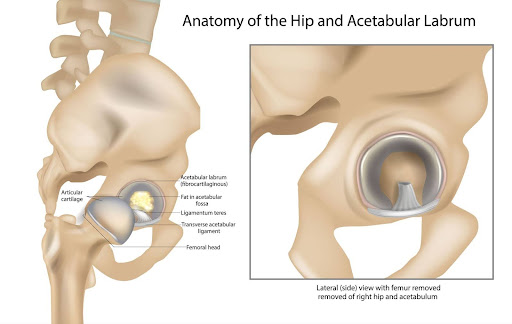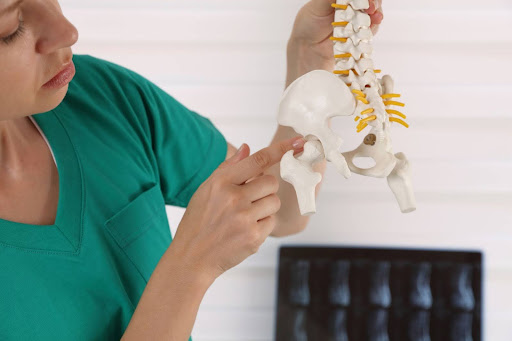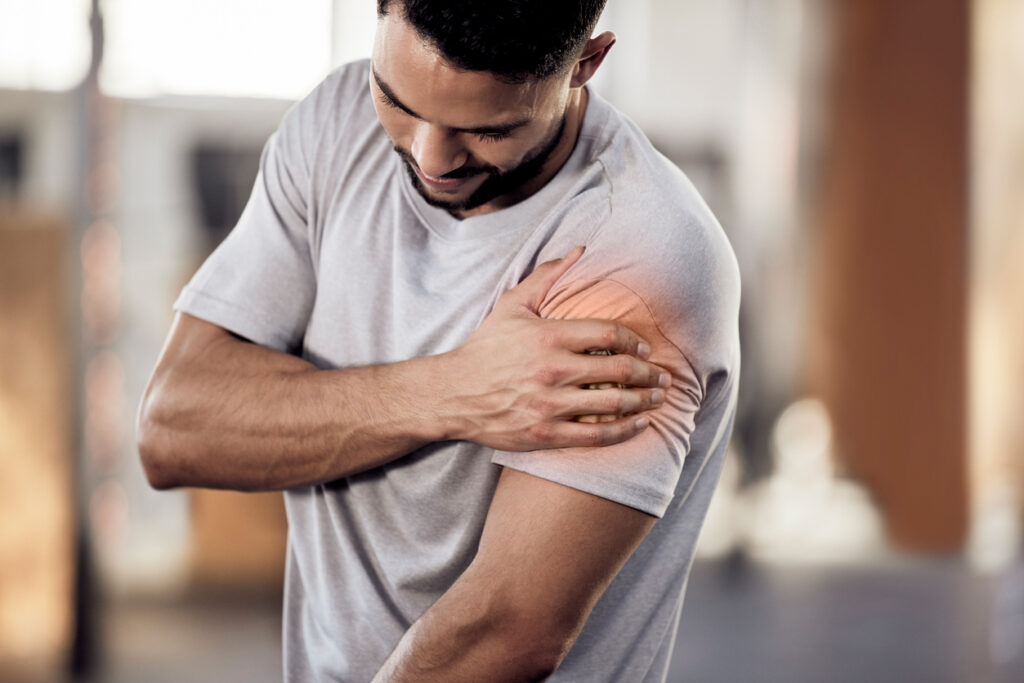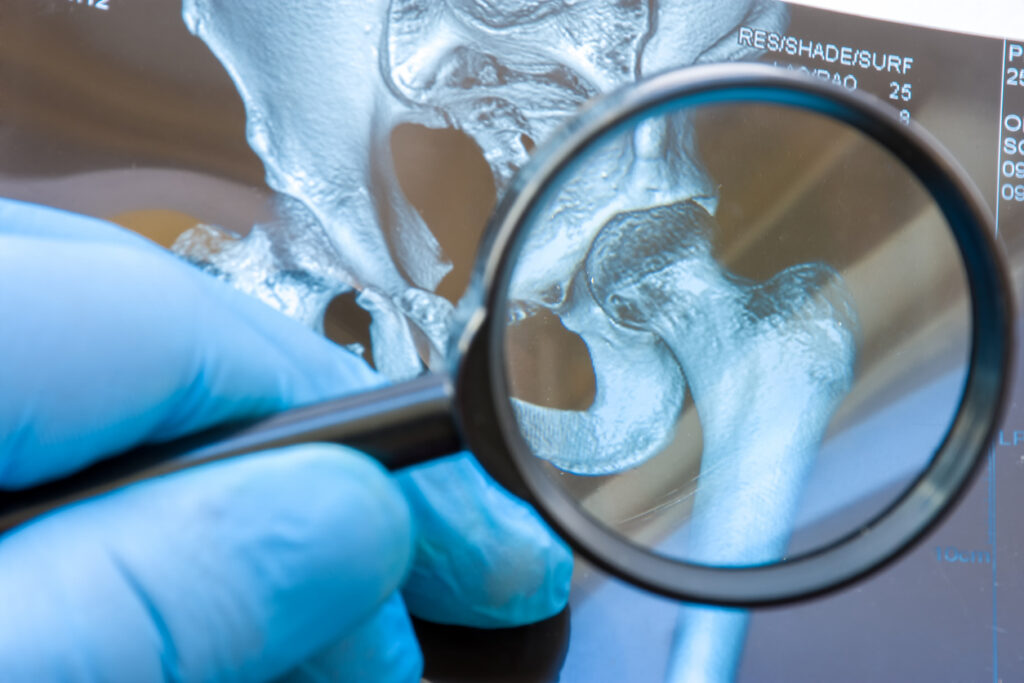Hip labrum tears are a painful condition affecting the ring of cartilage (the labrum) that surrounds the hip socket, helping stabilize the joint and cushion movement. Although often seen in athletes who perform repetitive twisting, pivoting, or high-impact activities, labral tears can also occur due to trauma, structural abnormalities, or age-related wear. When the labrum is damaged, pain, stiffness, and limited hip mobility can be significant, sometimes requiring surgical repair. In this comprehensive guide, we’ll explore what hip labrum tears are, why they happen, their symptoms, and treatment options so you can better understand how to recognize and manage this condition.
What Is a Hip Labrum Tear?
The hip labrum is a ring of cartilage that surrounds the hip socket, providing stability and smooth joint movement. A tear in the labrum can cause deep hip or groin pain, stiffness, and a sensation of instability. Because the hip joint is deep, labral tears can mimic other injuries such as muscle strains or early osteoarthritis.
Who is at risk?
- Athletes: Sports like soccer, hockey, football, and ballet increase risk due to repetitive pivoting and twisting motions.
- Non-athletes: Falls, car accidents, hip impingement (femoroacetabular impingement), or gradual age-related wear can also cause tears.

Causes and Risk Factors
Several factors contribute to labral tears, including repetitive stress, structural abnormalities, trauma, and degenerative changes. Common causes and risk factors include:
- Repetitive Motion: Twisting, pivoting, and sudden directional changes stress the hip labrum, causing microtrauma.
- Structural Abnormalities: Conditions like femoroacetabular impingement (FAI) or hip dysplasia can increase labral vulnerability.
- Trauma: Direct impacts, falls, or sudden twisting injuries may lead to acute tears.
- Degenerative Changes: Cartilage naturally wears down with age, making the labrum more prone to tearing.
- Previous Hip Surgery: Altered hip mechanics after surgery may increase the risk of labral injury.
Symptoms of a Hip Labrum Tear
Hip labrum tears often worsen with activity and affect daily movement, making early recognition important for effective treatment. Key symptoms include:
- Groin or Hip Pain: Pain is typically felt deep in the hip or groin and may worsen with prolonged activity, sitting, or positions that place stress on the joint, often interfering with daily movement.
- Clicking, Locking, or Catching: The hip may produce a catching, clicking, or locking sensation during movement, which is a hallmark sign of labral involvement and can limit smooth motion.
- Limited Range of Motion: Stiffness and difficulty fully moving the hip are common, especially during twisting, bending, or deep squatting motions.
- Pain With Activity: Actions like running, squatting, or climbing stairs frequently trigger discomfort, affecting both athletic performance and everyday tasks.
- Stiffness and Tenderness: After periods of rest or inactivity, the hip may feel tight, sore, or sensitive, and certain positions or movements can intensify the discomfort.

Diagnosing a Hip Labrum Tear
Diagnosing labral tears can be challenging because symptoms overlap with tendonitis, muscle strains, or arthritis. Diagnosis typically includes:
- Medical History & Physical Exam: A physician will usually begin with a detailed medical history and physical examination, checking for pain, reduced hip range of motion, and abnormal movement patterns.
- Imaging Tests:
- X-ray: Detects structural abnormalities.
- Magnetic resonance imaging (MRI) or MR Arthrogram: Confirms labral tears.
- Diagnostic Injections: Sometimes used to identify if the pain originates from the labrum.
Accurate diagnosis is essential for selecting the right treatment.
Treatment Options
Treatment for hip labrum tears typically begins with conservative approaches, but in some cases, surgical repair may be necessary to restore hip function and reduce pain. Treatment options include:
- Rest and Activity Modification: Limit movements that trigger pain while maintaining overall fitness through low-impact exercises such as swimming, cycling, or other gentle activities that do not strain the hip joint.
- Medications: Nonsteroidal anti-inflammatory drugs (NSAIDs) like ibuprofen can help reduce pain and inflammation, and corticosteroid injections may be considered for more severe or persistent symptoms.
- Physical Therapy: A structured program targets stretching tight muscles, strengthening weak hip and core muscles, improving joint stability, and following a gradual return-to-sport or activity plan.
- Ice and Heat Therapy: Applying ice during acute flare-ups helps control pain and inflammation, while heat therapy later in recovery promotes blood flow, flexibility, and muscle relaxation.
- Surgical Labrum Repair or Reconstruction: If conservative measures are not effective, arthroscopic repair or reconstruction can restore the labrum, improve hip function, and help prevent further joint damage over time.
Prevention Strategies
Since hip labrum tears often develop from repetitive stress and underlying structural issues, adopting preventive strategies can help protect the hip joint and reduce the risk of injury. Prevention focuses on joint protection and conditioning, including:
- Warm-Up and Cool-Down: Properly preparing your muscles before activity and allowing adequate recovery afterward helps reduce stress on the hip joint and lowers the risk of injury.
- Core and Hip Stability: Strengthening the abdominal, gluteal, and pelvic muscles supports proper hip alignment, improves balance, and enhances overall joint stability during movement.
- Gradual Training Increases: Avoid sudden overload, progressing exercise intensity and volume slowly allows the hip joint to adapt.
- Flexibility Maintenance: Regularly stretching the hip flexors, adductors, and hamstrings reduces tightness, promotes smooth movement, and decreases stress on the labrum.
- Proper Technique & Early Injury Care: Promptly addressing minor strains and consistently using correct form during sports and exercise minimizes unnecessary stress on the hip and helps prevent more serious injuries.

Contact Us
Hip labrum tears are treatable, especially with early diagnosis. Most individuals recover with conservative care or surgery and return to normal activities. Early intervention is key to preventing further joint damage and reducing long-term discomfort. If you are experiencing persistent hip or groin pain, schedule a consultation with Peter Howard, M.D., to receive expert evaluation, personalized treatment, and guidance on safely returning to the activities you enjoy.


